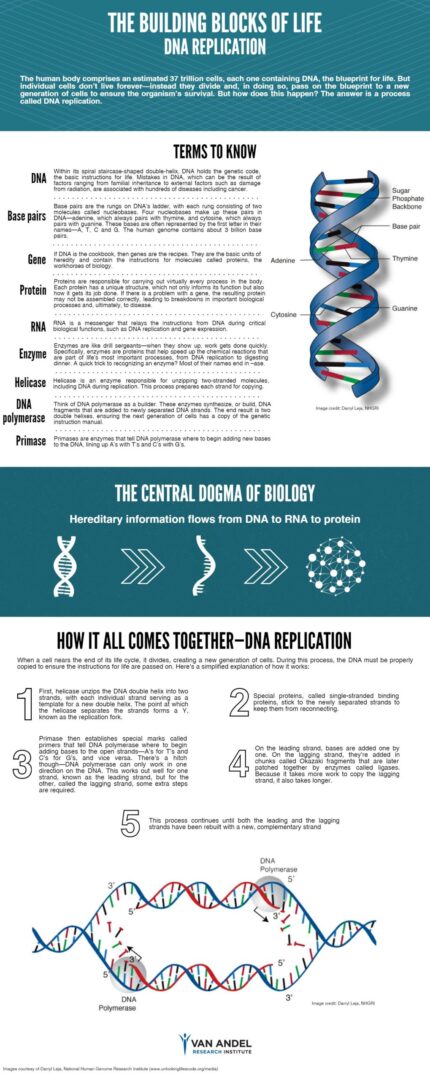Sometimes the smallest things have the biggest impact.
A prime example is a recent study from Van Andel Research Institute’s Dr. Huilin Li and Rockefeller University’s Dr. Michael O’Donnell. Their discovery centered on a process called DNA replication in which a cell’s genetic code—its DNA—is copied so it may be passed on to a new generation of cells. More than 40 diseases, from certain cancers to anemia, are linked to problems with replication.
Specifically, Li and O’Donnell found that helicase—a tiny molecule responsible for unzipping double-stranded DNA in preparation for copying—is oriented in a different way than previously thought, giving scientists new insight that one day may inform the development of new therapies.
Replication is a complex process with lots of pieces, but we’ve distilled the big points down into a handy cheat sheet of key terms. Check it out below.
